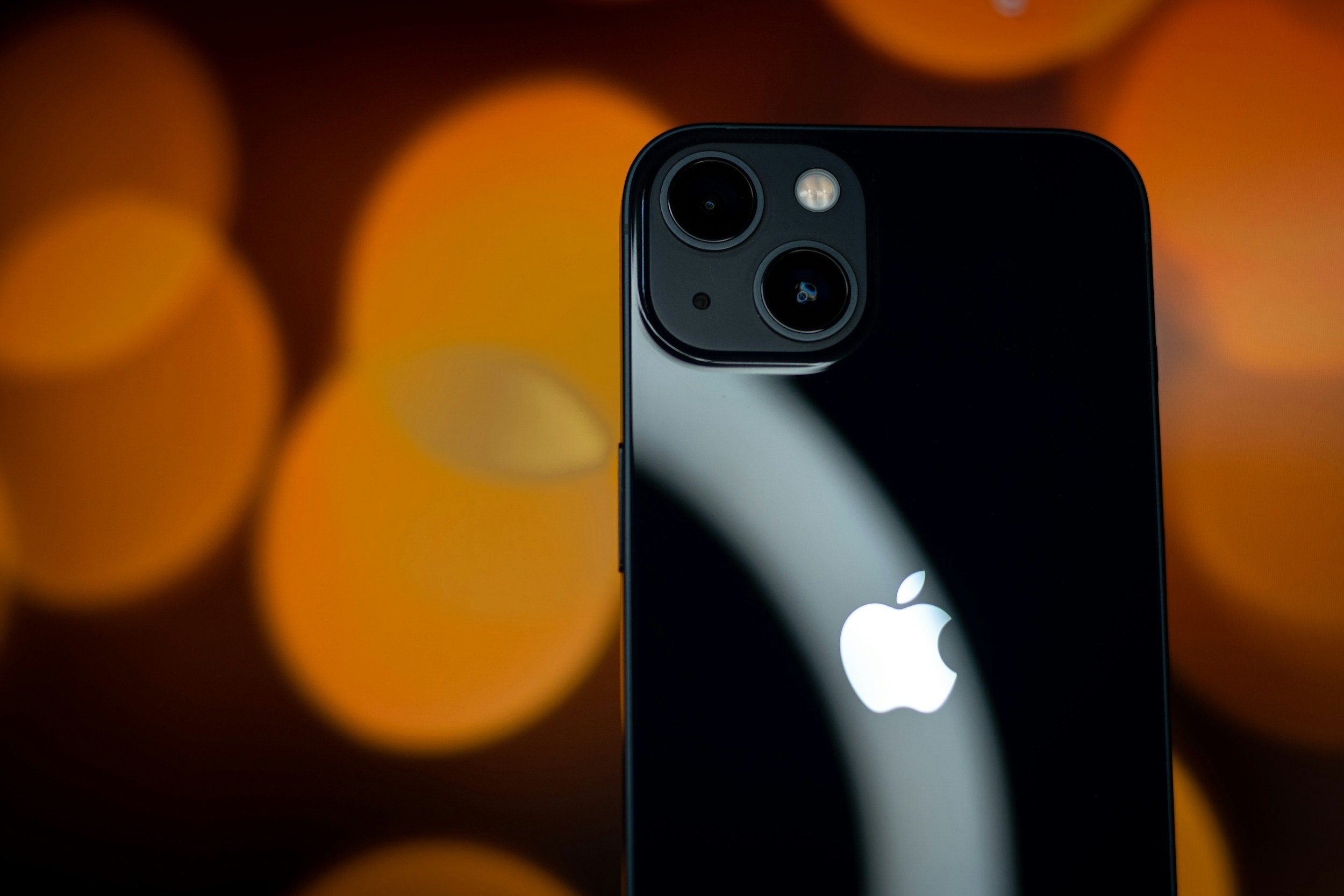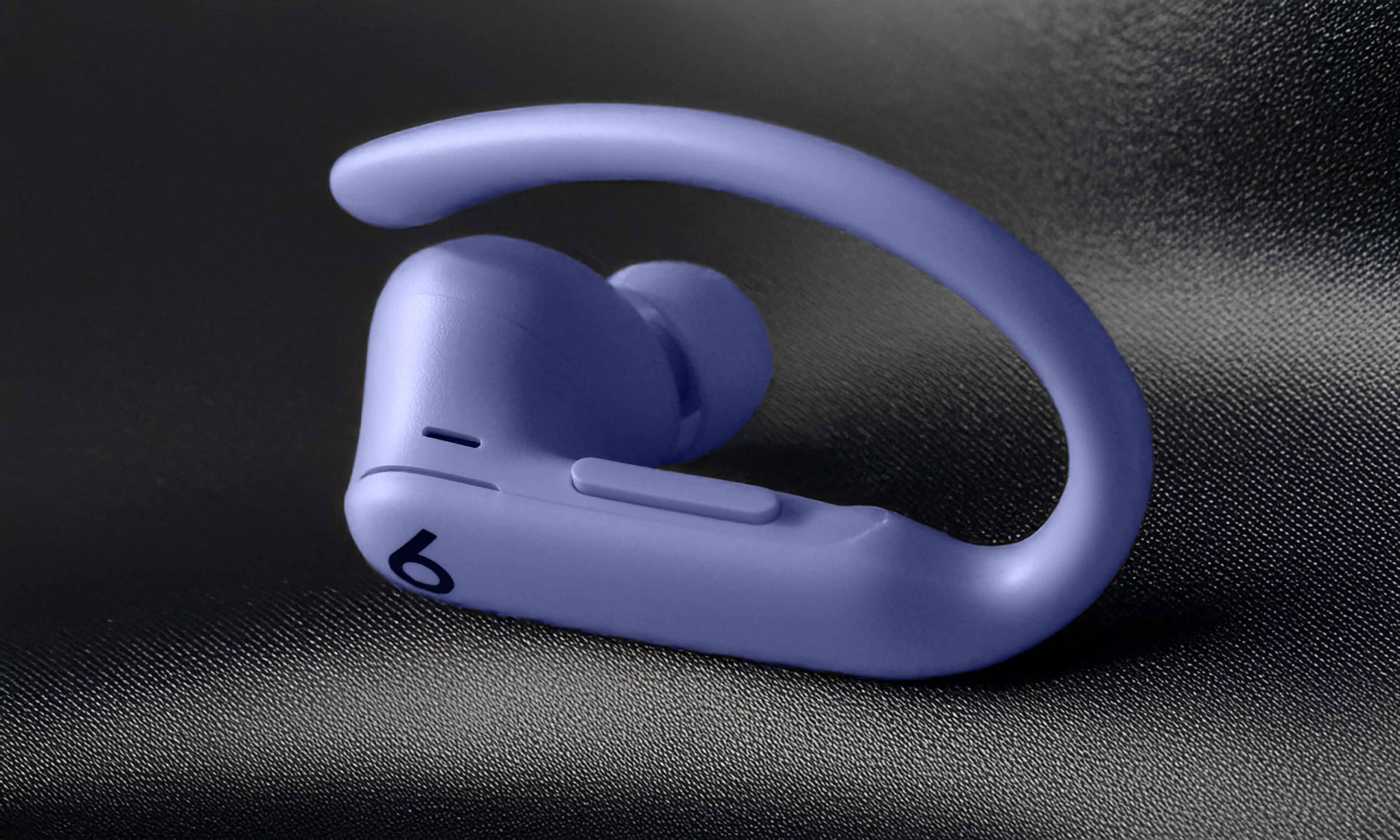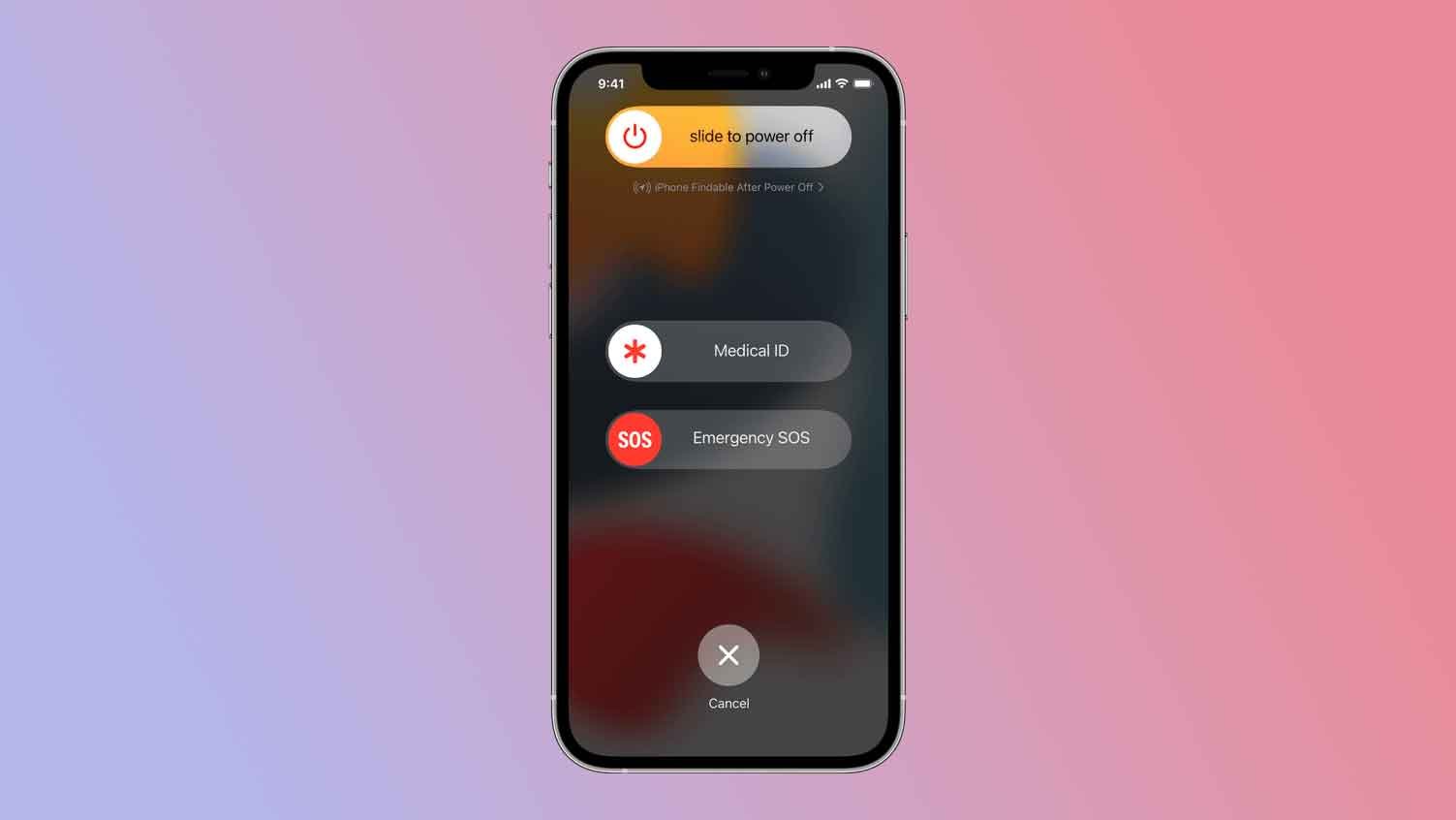Does the iPhone 14 Have eSIM? – Everything You Need to Know
When you purchase through links on my site, I may earn an affiliate commission. Here’s how it works.
Table of Contents Show
Remember that time you were traveling abroad and your phone died? You frantically searched for a local SIM card, only to realize the store was closed or the card wouldn't work in your phone.
Or worse, you fumbled around with that tiny metal ejector tool, trying not to lose the even tinier SIM card itself. It's a first-world problem, sure, but still a pain in the you-know-what.
Now, I'm not one to blindly hype up every new tech trend. But after using eSIM on my iPhone 14 Pro Max, I gotta say, it's pretty slick. It's like the AirDrop of cellular plans – no more fiddling with physical cards, just a few taps and you're connected.
In this deep dive, we're going to cover everything you need to know about eSIM on the iPhone 14. We'll break down if the iPhone 14 lineup supports eSIM, what an eSIM actually is, how it works with different iPhone 14 models around the world, and give you a step-by-step guide on how to set it up (it's easier than you might think).
We'll even talk about whether it's the right move for YOU, because let's be real, not every cool new feature is a perfect fit for everyone.
By the end of this, you'll be an eSIM expert. So, let's get into it.
What Is an eSIM?
Simply put, it's a SIM card, but without the card part. Instead of that tiny chip living on a removable plastic tray, it's embedded directly into your phone's hardware. Think of it like a built-in SIM card, permanently installed and ready to roll.
The big difference here is flexibility. With a physical SIM, you're tied to that specific card and carrier. Switching carriers meant physically swapping out SIM cards – not the end of the world, but definitely not convenient. eSIM changes the game.
You can download and activate plans from different carriers digitally, over the air. This means switching carriers or trying out a new plan is as simple as a few taps on your screen. No more digging for that SIM ejector tool or waiting for a new card to arrive in the mail.
Now, eSIMs aren't exactly new tech. They've been around for a few years, quietly making their way into smartwatches, tablets, and some earlier iPhones. But the iPhone 14's all-in approach in the US – ditching the physical SIM slot altogether – is a pretty bold move. It's a signal that eSIM is finally ready for the big leagues.
It's not just Apple, either. We're seeing more and more Android phones and other devices embrace eSIM technology. This is great news for us consumers because it means more competition, more choice, and hopefully even better deals on our cellular plans.
But hold on a second, before you toss out all your physical SIM cards, let's dive deeper into how this tech actually works with the iPhone 14. Different models, different countries, different setups – there's a lot to unpack here.
Does the iPhone 14 Support eSIM?
Now, let's talk specifics: how does the iPhone 14 lineup handle eSIMs? Well, it depends on where you buy it.
In the US, all iPhone 14 models are eSIM-only. Yep, you heard that right. Apple made the bold move of completely ditching the physical SIM card slot for their US models. This means your iPhone 14, 14 Plus, 14 Pro, or 14 Pro Max will rely solely on eSIM for cellular connectivity.
But, if you're outside the US, things are a bit different. International iPhone 14 models offer dual SIM capabilities: you get one eSIM and one traditional nano-SIM card slot. So you have the best of both worlds – the flexibility of eSIM and the option to use a physical SIM if needed.
Now, I know some of you might be hesitant about this whole eSIM-only thing. But trust me, there are some serious perks to having an eSIM-powered iPhone 14:
Convenience
Forget about fumbling with SIM ejector tools or waiting for new SIM cards to arrive. Switching carriers or activating a new plan is as easy as scanning a QR code or entering a few details.
More Space for Other Things
That SIM card tray takes up valuable internal space. With eSIM, Apple can use that space for other components, like a bigger battery (who wouldn't want that?).
Dual SIM
With eSIM, you can have two different lines on one phone – maybe one for work and one for personal use. Or, you could have your regular carrier for calls and texts, and a separate data-only plan for international travel. The possibilities are pretty cool.
Travel Friendly
Speaking of travel, eSIM makes it a breeze to get connected when you're abroad. Instead of hunting down a local SIM card, you can often just download an eSIM plan from a local carrier right on your phone.
Of course, eSIM isn't perfect. There are still some limitations and potential downsides, like carrier compatibility and regional availability. But overall, I think it's a significant step forward for mobile technology. It simplifies things, offers more flexibility, and just makes the whole SIM card experience less of a hassle.
How to Set Up and Use eSIM on the iPhone 14
Alright, now for the hands-on part: how do you actually use eSIM on your iPhone 14? Don't worry, it's surprisingly straightforward. Apple's made the process pretty user-friendly, even for those who aren't super tech-savvy.
How to Activate an eSIM from Your Carrier
This is the most common way to get started. Your carrier will usually provide you with a QR code to scan, or a set of activation details to enter manually.
QR Code Method
This is the easiest way. Just open your iPhone's camera app, point it at the QR code, and tap the notification that pops up. Follow the on-screen instructions, and boom – you're activated.
Manual Entry
If you don't have a QR code, your carrier will give you an activation code and other details. Go to Settings > Cellular > Add Cellular Plan, and enter the information when prompted.
How to Transfer an Existing Number to eSIM
Already have a physical SIM with a number you want to keep? No problem. You can transfer it to your eSIM in a few steps:
Check Carrier Compatibility
First, make sure your carrier supports eSIM number transfers. Most major carriers do, but it's always good to double-check.
Contact Your Carrier
They'll guide you through the process, which usually involves confirming your identity and providing some account information.
Activate the eSIM
Once the transfer is complete, you'll receive a notification on your iPhone. Follow the prompts to activate the eSIM with your existing number.
How to Set Up Multiple eSIM Profiles
This is where eSIM really shines. You can store multiple eSIM profiles on your iPhone 14, even from different carriers. Here's how:
Go to Settings
Head over to Settings > Cellular.
Add Cellular Plan
Tap on Add Cellular Plan and follow the same steps as activating a new eSIM (either via QR code or manual entry).
Label Your Plans
Give each eSIM profile a unique label (e.g., "Work," "Personal," "Travel"). This will make it easier to manage them later.
Choose Your Default Line
In Settings > Cellular, you can set a default line for calls, messages, and data. You can also choose a specific line for each individual contact.
How to Manage Your eSIMs in Settings
Your iPhone 14 gives you granular control over your eSIM profiles. In Settings > Cellular, you can:
Turn eSIMs On/Off
This is handy if you want to temporarily disable a line without deleting it.
Label eSIMs
Change the labels you assigned earlier to better reflect your usage.
Change Cellular Plans
Switch between different plans or carriers without physically swapping SIM cards.
Delete eSIMs
If you no longer need a plan, you can delete its eSIM profile.
I'll admit, it might seem a bit overwhelming at first, but don’t worry, once you get the hang of it, managing eSIMs is pretty easy. It's way more convenient than dealing with physical SIM cards. Plus, it opens up a whole new world of possibilities for how you use your iPhone 14.
How to Use Dual SIM with eSIM on iPhone 14 (International Models Only)
If you're lucky enough to have an international iPhone 14 model with that dual SIM capability, let's talk about how to make the most of it.
Essentially, you've got two separate lines on a single phone (similar to having multiple eSIMs activated on one iPhone 14). Think of it like having a work phone and a personal phone, but without the extra bulk (and cost).
Here's the breakdown:
The Setup
As we've covered, you'll have one physical nano-SIM slot and one eSIM. You can use two different carriers, or two plans from the same carrier – it's up to you. Just follow the steps I outlined earlier for activating both.
Labeling Your Lines
To avoid confusion, head to Settings > Cellular and give each line a clear label, like "Work" or "Personal." This helps you keep track of which number is being used for what.
Choosing Your Default
In the same Cellular settings, you'll also see the option to choose a default line. This is the number that will be used for most outgoing calls, messages, and data. But don't worry, you can easily switch to the other line when needed.
Data Usage
You can even assign one line specifically for cellular data, which is handy if you've got a data-only eSIM plan for travel. This way, you won't accidentally use up your primary plan's data allowance.
Making and Receiving Calls
When you make a call, your iPhone will default to the number you've set as your primary. But you can always choose the other line before dialing. When someone calls you, it'll usually ring on both lines unless you've set up specific forwarding rules.
Managing Messages
Similar to calls, you can choose which line to use for sending messages. Incoming messages will appear in separate threads based on the line they were sent to.
Now, you might be thinking: "Isn't this going to drain my battery faster?" The truth is, it might have a slight impact on battery life, but it's not as drastic as you might think. Plus, the convenience and flexibility of having two lines often outweighs the minor battery drain.
Let me know in the comments if you've got any questions about using dual SIM with eSIM. And if you're already rocking this setup, I'd love to hear about your experience!
Why Is eSIM on My iPhone 14 Not Working?
eSIM is great when it works. But just like any tech, it's not immune to the occasional hiccup. If your eSIM on the iPhone 14 isn't playing nice, don't panic.
Here are some common issues and troubleshooting tips to get you back up and running:
1. "No Service" or "Searching..." Issues
This is the most frustrating one, right? You're staring at your phone, waiting for those bars to appear, but nothing happens. Here's what you can try:
Airplane Mode Toggle
It's the oldest trick in the book, but it often works. Turn Airplane Mode on for a few seconds, then turn it back off. This can sometimes reset your cellular connection.
Check Carrier Settings
Go to Settings > General > About and see if there's a carrier settings update available. These updates often contain fixes for network issues.
Restart Your iPhone
A simple restart can work wonders. Hold down the power button and volume up button until the "slide to power off" slider appears, then restart your phone.
Reset Network Settings
If all else fails, go to Settings > General > Transfer or Reset iPhone > Reset > Reset Network Settings. This will erase your Wi-Fi passwords and VPN settings, so make sure you have those handy before you reset.
2. eSIM Activation Issues
Sometimes, the eSIM activation process doesn't go as smoothly as planned. Here are some things to consider:
Check for Carrier Support
Make sure your carrier actually supports eSIM on the iPhone 14. It seems obvious, but you'd be surprised how often this gets overlooked.
QR Code Woes
If you're using a QR code to activate, make sure it's not damaged or blurry. Try entering the activation details manually instead.
Contact Your Carrier
If you're still having trouble, reach out to your carrier's customer service. They might need to manually provision your eSIM or troubleshoot any issues on their end.
3. Dual SIM Problems
Using two lines on one phone can be awesome, but it can also lead to some confusion. Here are a couple of common issues:
Call and Message Issues
Make sure you've selected the correct line as your default for calls, messages, and data. You can also assign specific lines to individual contacts.
Data Roaming
If you're traveling internationally, double-check your data roaming settings to avoid any nasty surprises on your bill.
4. eSIM Not Showing Up
If your eSIM simply isn't appearing in the Cellular settings, try these steps:
Software Update
Make sure your iPhone is running the latest version of iOS. Sometimes, software updates can fix eSIM visibility issues.
Reset eSIM
Go to Settings > Cellular > [Your eSIM] > Remove Cellular Plan. Then, try adding the eSIM again.
5. When All Else Fails...
If none of these tips work, it might be time to seek professional help. Contact Apple Support or visit an Apple Store, and they should be able to diagnose and fix the issue for you.
Is eSIM Right for You?
Alright, we've covered a lot of ground here. But the big question remains: is eSIM right for YOU and your iPhone 14?
Let's break it down one more time, pros and cons style, Tobias-approved:
The Good Stuff
Convenience
This is the biggest win. Switching carriers, activating new plans, managing multiple lines – it's all pretty easy with eSIM. No more messing around with tiny SIM cards.
Flexibility
eSIM gives you options. You can have multiple plans on one phone, switch between them easily, and even try out new carriers without committing to a physical SIM.
Travel Perks
For frequent flyers or digital nomads, eSIM is a game-changer. You can easily snag local eSIM plans in different countries, saving you from roaming charges or hunting down physical SIMs.
Future-Proofing
eSIM is the future of cellular connectivity. More and more devices are adopting it, and carrier support is only going to expand. Using eSIM now means you're ahead of the curve.
Space Saver
eSIM frees up that tiny bit of space inside your phone, and who knows, maybe Apple will use that for a bigger battery someday (fingers crossed).
The Not-So-Good Stuff
Carrier Limitations
Not all carriers fully support eSIM yet, especially smaller or regional ones. Double-check with your carrier before making the switch.
Regional Restrictions
eSIM availability can vary depending on where you live. Some countries and regions are ahead of the curve, while others are still catching up.
Transferring to Older Phones
If you ever need to switch to an older phone without eSIM support, it might be a bit more complicated to transfer your number and plan back to a physical SIM.
Learning Curve
For some folks, the initial setup and management of eSIM can feel a bit confusing. But don’t be intimidated – once you get the hang of it, it's pretty intuitive.
So, Who Should Go for eSIM?
Frequent Travelers
If you're constantly hopping between countries, eSIM will make your life a whole lot easier.
Tech Enthusiasts
If you love the latest tech and want to be ahead of the curve, eSIM is definitely for you.
Flexibility Seekers
If you like having options and switching between plans or carriers, eSIM gives you that freedom.
Who Might Want to Hold Off?
Limited Carrier Options
If your carrier doesn't fully support eSIM or you're on a smaller carrier, you might want to wait a bit.
Technophobes
If the thought of managing your SIM card digitally makes you nervous, stick with what you know for now.
Those in Areas with Limited Support
If you live in a region where eSIM isn't widely adopted yet, you might encounter some limitations.
Ultimately, whether or not eSIM is right for you depends on your individual needs and preferences. But if you're asking me, I think it's a pretty awesome technology with a lot of potential. It might take some getting used to, but the convenience and flexibility it offers are hard to beat.
Conclusion
Alright, that's the lowdown on eSIM and the iPhone 14. We've covered a lot, so let's quickly recap:
eSIM
It's a digital SIM card built right into your phone, offering convenience, flexibility, and a whole lot less hassle than traditional SIM cards.
iPhone 14 Goes All-In (in the US)
In the US, every iPhone 14 model is eSIM-only. Internationally, you'll still have a physical SIM slot alongside the eSIM.
Pros Outweigh the Cons
Sure, eSIM has some limitations, like carrier compatibility and regional availability. But the benefits, especially for frequent travelers and multi-line users, are hard to ignore.
It's Not as Complicated as It Might Seem
Activating, transferring, and managing eSIMs on the iPhone 14 is pretty intuitive. And if you do run into any hiccups, there are plenty of troubleshooting tips and resources available.
Now, I'm curious to hear from you guys. Have you made the switch to eSIM on your iPhone 14? What's your experience been like? Any tips or tricks to share? Hit the comments below and let me know!
And if you found this deep dive helpful, make sure to subscribe to my newsletter for more tech breakdowns, reviews, and all the latest news from the world of tech.
Until next time, thanks a lot for reading!
FAQ
-
Yes, all iPhone 14 models support eSIM. However, models sold in the US are eSIM-only, while international models offer dual SIM capability (eSIM + nano-SIM).
-
Yes! Most carriers allow you to transfer your existing number to an eSIM. Contact your carrier for instructions on how to do this.
-
You can store multiple eSIM profiles on your iPhone 14, even from different carriers. There's no set limit, but managing a large number of eSIMs might get a bit cumbersome.
-
Yes, if you have an international iPhone 14 model with dual SIM capability, you can use one eSIM and one physical SIM simultaneously.
-
If your carrier doesn't offer eSIM support, you won't be able to use eSIM on your iPhone 14.
However, eSIM adoption is growing rapidly, so it's worth checking with your carrier periodically to see if they've added support.
-
Yes, eSIM is just as secure as a physical SIM card. In fact, some argue that it's even more secure because it can't be physically removed or tampered with.
-
Yes, eSIM is a great option for international travelers. You can easily purchase and activate local eSIM plans in many countries, eliminating the need to find and swap physical SIM cards.
-
Your eSIM profile is not tied to your physical device. If you lose or damage your iPhone, you can usually transfer your eSIM profile to a new device by contacting your carrier.
-
Many industry experts believe so. eSIM offers numerous advantages over physical SIM cards, and its adoption is increasing rapidly across various devices.
MOST POPULAR
LATEST ARTICLES

























